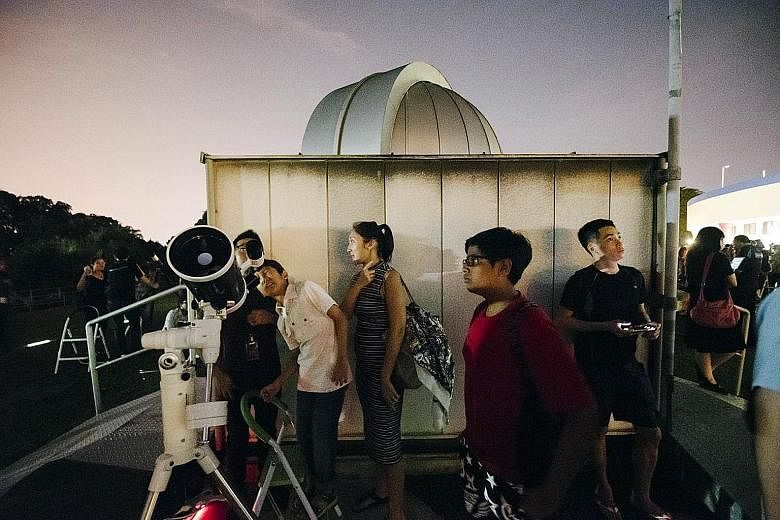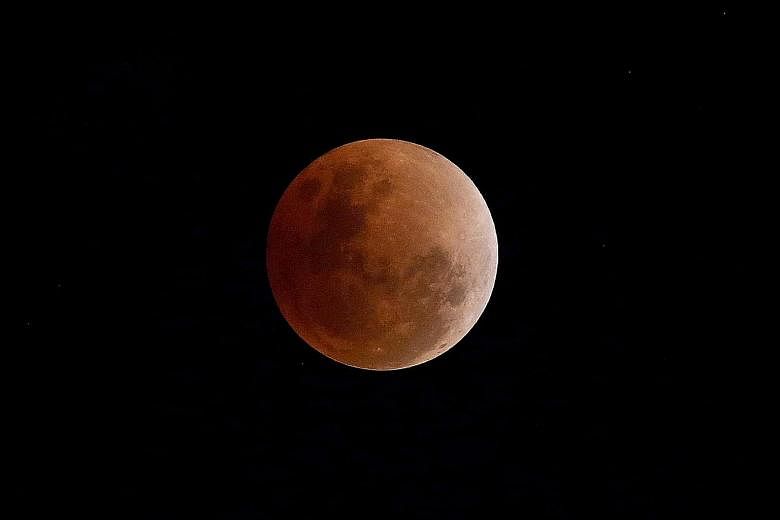A rare "super blue blood moon" kept thousands of people in Singapore captivated for about three hours last night, with some peering through telescopes to catch the cosmic event also witnessed by others around the world.
A lunar eclipse, a blue moon and a supermoon occurred simultaneously - in a rare coincidence which last happened on March 31, 1866, almost 152 years ago.
An estimated 5,000 visitors flocked to The Observatory at the Science Centre Singapore to use one of 11 telescopes set up to catch the rare lunar eclipse. A special viewing session was held from 7.30pm to 10.30pm.
At around 8.50pm, a full eclipse was visible, prompting visitors to whip out their phones and cameras to capture the moment.
Ms Sally Sun, 28, a mechanical engineer who viewed the full eclipse through one of the telescopes, said: "There was a gradient of brown to red. I've seen the blood moon in many photos, but it's amazing and meaningful to see it for yourself, as I'm a big fan of astronomy."
Mr Karthik Addagarla, 30, an operations manager, had to queue for about two hours at the Science Centre. He said: "It was worth my time. This is a rare phenomenon. Through the telescope, I could see the red moon much clearer than with the naked eye."
Over at National Junior College (NJC), about 300 people gathered at eight observation decks set up at the school to watch the astronomical phenomenon. They included the college's students and their parents, along with staff and their families. NJC also invited students and teachers from other schools, including Greenridge Primary, Northland Secondary and Kranji Secondary.
Explaining the blood moon phenomenon, Science Centre Singapore chief executive Lim Tit Meng said sunlight is of multiple wavelengths, and longer wavelengths, such as those of a red colour, are deflected and cast onto the Moon during the lunar eclipse.
The shorter wavelengths are instead scattered into the atmosphere, he said.
During a lunar eclipse, the Moon enters the Earth's shadow. When there is a total lunar eclipse, the Moon takes on a red colour and is known as a blood moon.
Because last night's full moon was the second full moon of the month, it was dubbed a blue moon. It does not appear blue, but is given the name for its rarity as it occurs once every two years and eight months.
As for the supermoon, the term refers to when a full moon coincides with the Moon being the closest to Earth.
Astronomy enthusiasts in other parts of the world, such as western North America, the Middle East, eastern Russia, Australia and New Zealand, and other parts of Asia, could also observe the cosmic event.
•Additional reporting by Charmaine Ng



